July Raincross Rundown
A curated list of upcoming events and happenings The Gazette team is most excited about.
One hundred and twenty years ago today President Teddy Roosevelt came to Riverside and planted two different trees

Riverside citizens were very excited 120 years ago this month when President Teddy Roosevelt came to town and spent the night at the newly opened Glenwood Mission Inn. Roosevelt came West in the spring of 1903 to gain support prior to the 1904 election and to view many of the wonders in the Western states. The President disembarked late in the afternoon of May 7 at the Pachappa Depot, about two and a half miles down the track from the downtown depot.
The reason for disembarking at Pachappa was for the tour and parade that the committee had developed for Roosevelt to see part of the city and then enter downtown triumphantly for his speech. There at Pachappa station, at ten minutes after six, he was greeted and given a carriage ride from the depot on Jane Street. Eleven highly decorated carriages welcomed the train and its passengers. Instead of flooding the street with roses as they did in Redlands, the women of the Riverside Woman’s Club decorated the carriages and horses. The President’s carriage was decorated in the yard and under the supervision of Mary E. Darling, a Riverside community leader (Woman’s Club, Pioneer Historical Society, Wednesday Club, and other organizations). Mrs. Darling instructed the women to be at her home at 222 E. Arlington Avenue (later 3650 Arlington Avenue and today part of Shamel Park) by 9:00 am the morning of the President’s arrival. The carriage decorated for Roosevelt was the same carriage used to transport President Benjamin Harrison on his visit to the city of Riverside on April 23, 1891. It was covered with pink La France roses, the wheels were intertwined with garlands of Marechal Neil roses, and the horse collars had yellow roses. Bicycle riders and horseback riders followed the carriages making quite a procession.
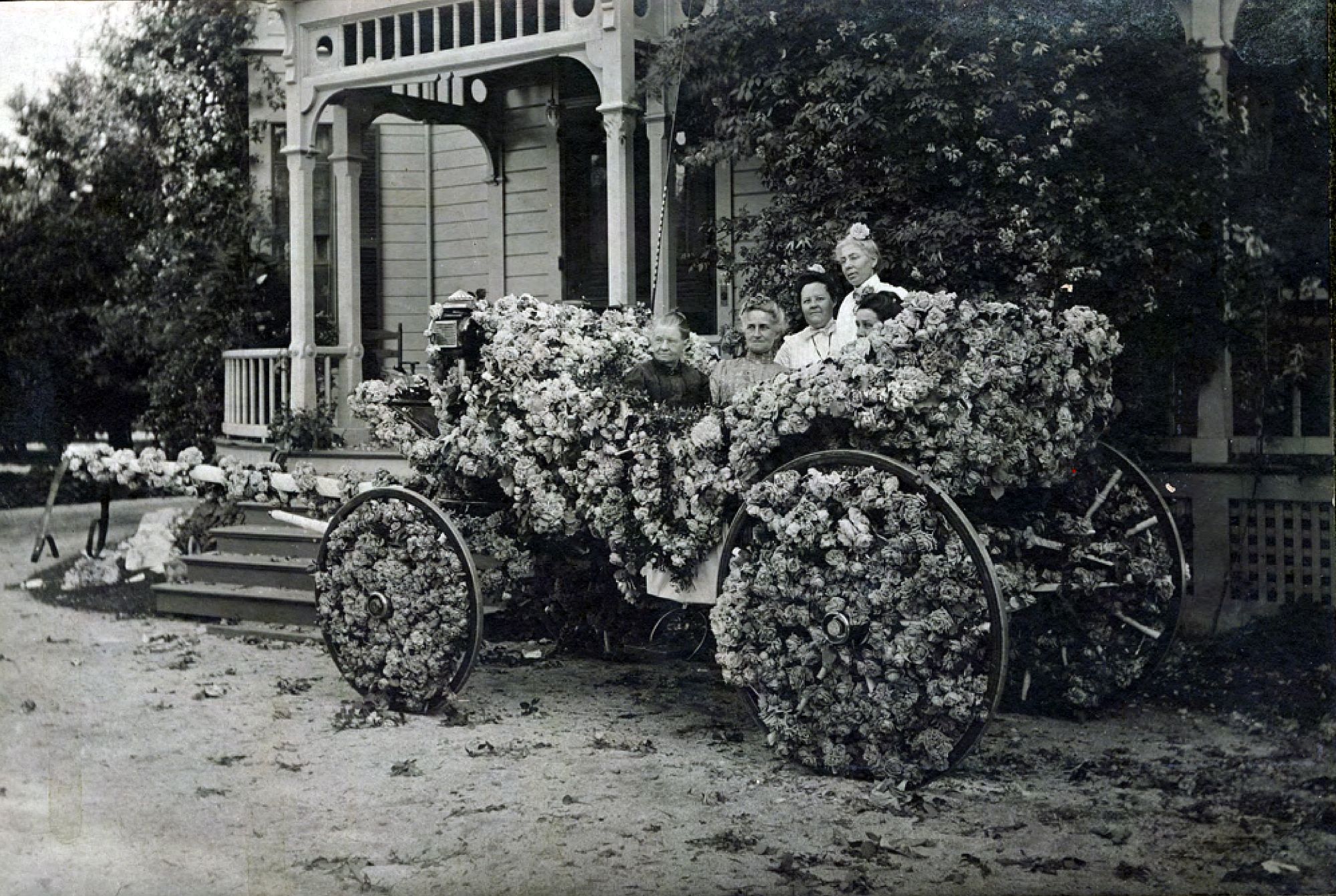
Together with leading citizens of Riverside, the carriages traveled to the Alta Cresta Ranch of Cornelius Rumsey off Victoria Avenue. (Rumsey house today is at 6700 Victoria Avenue). At that location, each carriage was presented with a basket of navel oranges from the Rumsey groves. From Rumsey’s property, the party proceeded to Raeburn Place (2508 Raeburn Drive), the stately home of William Irving. The entire party, from the President to the newspapermen, expressed the greatest enthusiasm over the views of the valley and the expanse of the orange groves.
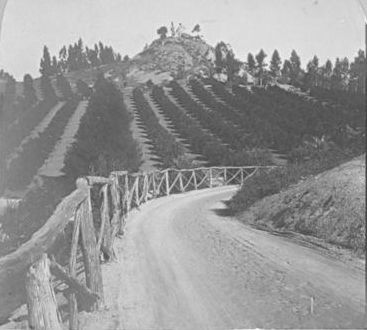
After visiting the homes and oranges groves of Rumsey and Irving, the parade of carriages followed around back to the head of Victoria Avenue (from this point, at Myrtle Street going south, Victoria Avenue was divided with a medium). Cornelius Rumsey had conceived of the idea that President Roosevelt could plant a towering palm tree in honor of Queen Victoria at the head of the original Victoria Avenue near Myrtle Street. A forty-five-foot Washington Robusta Palm, through the efforts of Rumsey, had been placed beforehand in a hole. President Roosevelt threw the first shovel full of dirt over the roots of the tree and dedicated it in honor of Queen Victoria.
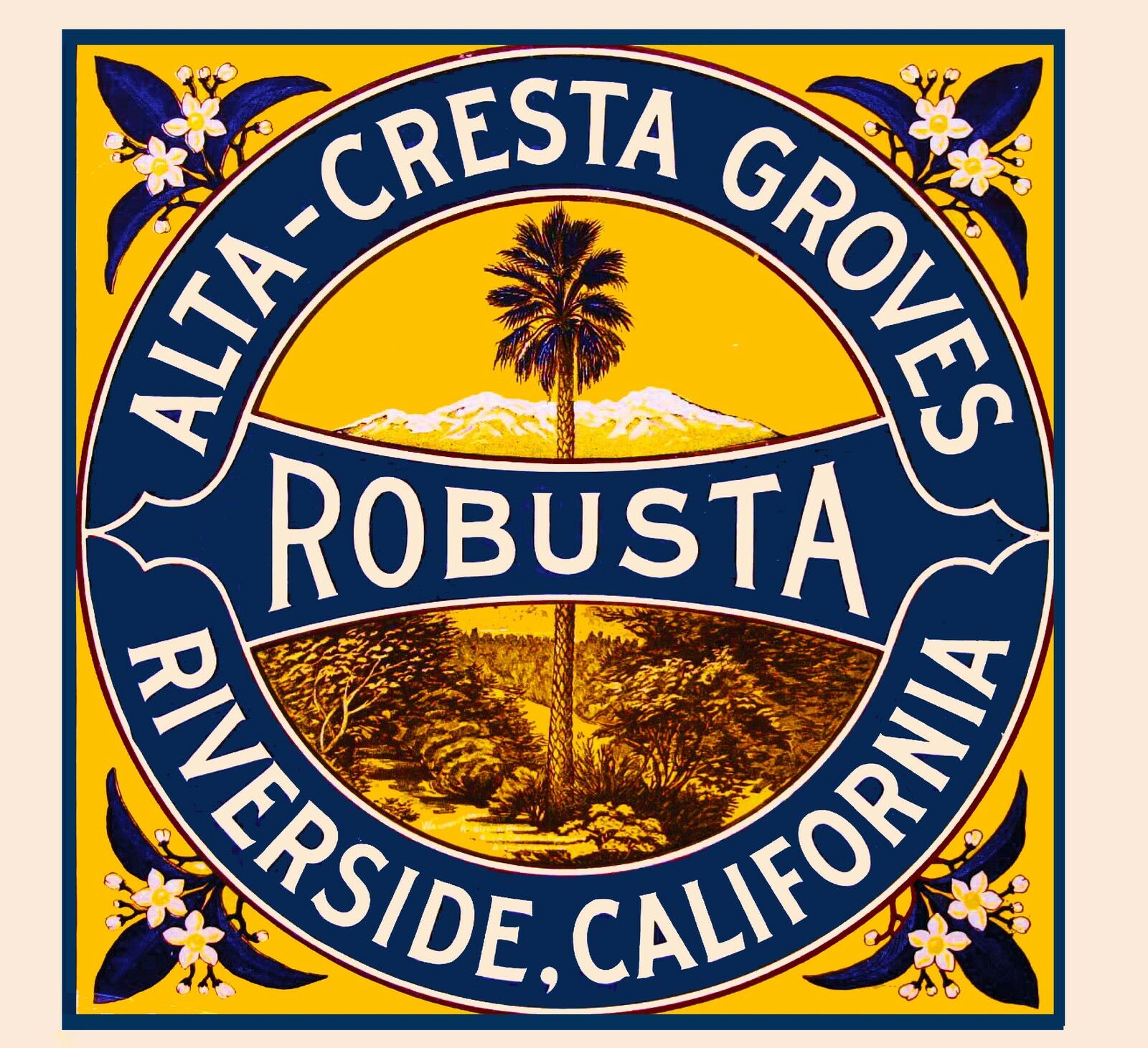
Over the years, the palm tree became known as the Roosevelt Palm. In Riverside, the tree was also sometimes popularly known as “Teddy’s Big Stick” in reference to the popular phrase that Roosevelt often used to describe his philosophy of diplomacy: “speak softly and carry a big stick; you will go far.”
The Roosevelt Palm tree still stands along Victoria Avenue near Myrtle on a small piece of land along with five other palm trees. A new tablet was placed below the palm tree on March 27, 1965, by the Jurupa Parlor Native Daughters of the Golden West. This tablet reads:
ROOSEVELT PALM
ORIGINALLY QUEEN VICTORIA PALM PLANTED BY
PRESIDENT THEODORE ROOSEVELT MAY 8, 1903.
MARKED MARCH 27, 1965 BY JURUPA PARLOR NO. 296
NATIVE DAUGHTERS OF THE GOLDEN WEST
RIVERSIDE CALIFORNIA
The date on the tablet is wrong. The Palm Tree was planted by Roosevelt late in the afternoon on May 7, and the Parent Navel Orange Tree was planted early the next morning on May 8 in the courtyard of the Mission Inn. In November of 1984, the City of Riverside declared the Roosevelt Palm as Riverside City Cultural Landmark #64.
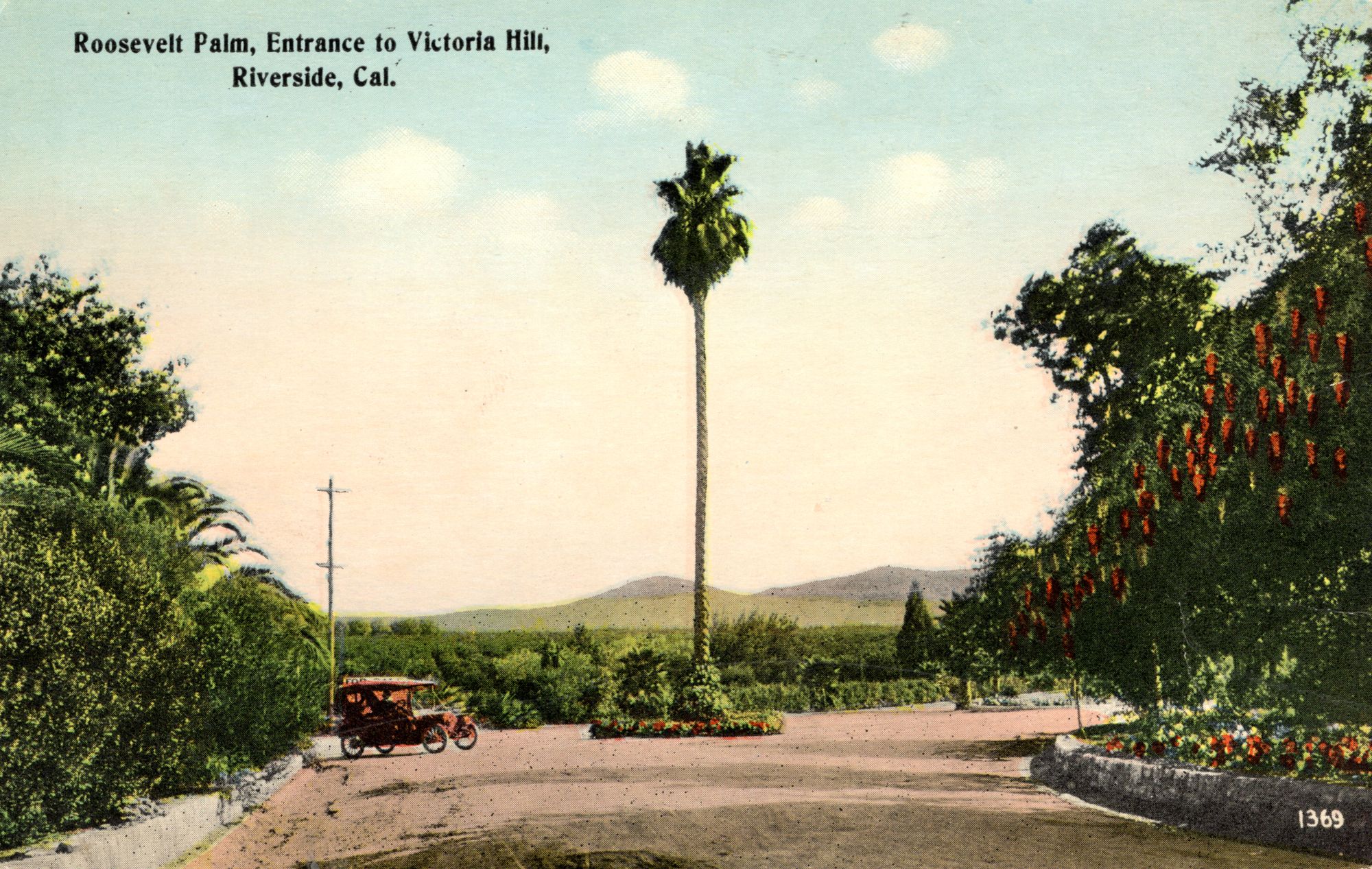
Following the palm tree planting ceremony, the carriages proceeded towards downtown, crossing over the old Victoria Bridge, arriving finally at Lime and Fourteenth, where a formal parade assembled. The parade ended across the street from the Mission Inn, where Roosevelt gave a speech. After a banquet at the Inn, the President spent the night in a suite of rooms that came to be known as the Presidential Suite (today, the Presidential Lounge). The first wing of the Glenwood Mission Inn, the Mission Wing, had just opened in January of that year.
A second tree-planting ceremony for Roosevelt happened the next morning before his early departure. One of the original navel orange trees was given to the city in 1902 and transplanted to a small lot on the corner of Arlington and Magnolia, where it still stands today. The other one at that time was still on the old Tibbets homeplace near Central and Magnolia. The land had been foreclosed on by Lewis Jacobs, a San Bernardino banker. Jacobs died in 1900, and his estate was now selling the land. The newly formed Riverside Historical Society (formed in January of 1903) stepped in and rescued the remaining tree. The committee members who traveled to San Bernardino and met with the executor of the Jacobs estate were Charles E Rumsey, Albert S. White, and Charles M Loring. Frank Miller, a prominent member of the historical society, offered the site for the tree in front of the Old Adobe at his Glenwood Mission Inn. The next morning on May 8, at 7:30 am, with members of the society grouped around him, John G. North, President of the Riverside Historical Society and son of Riverside founder John W. North spoke. Following North’s remarks, Teddy Roosevelt transplanted one of the two original parent navel orange trees in the courtyard in front of the Old Adobe.
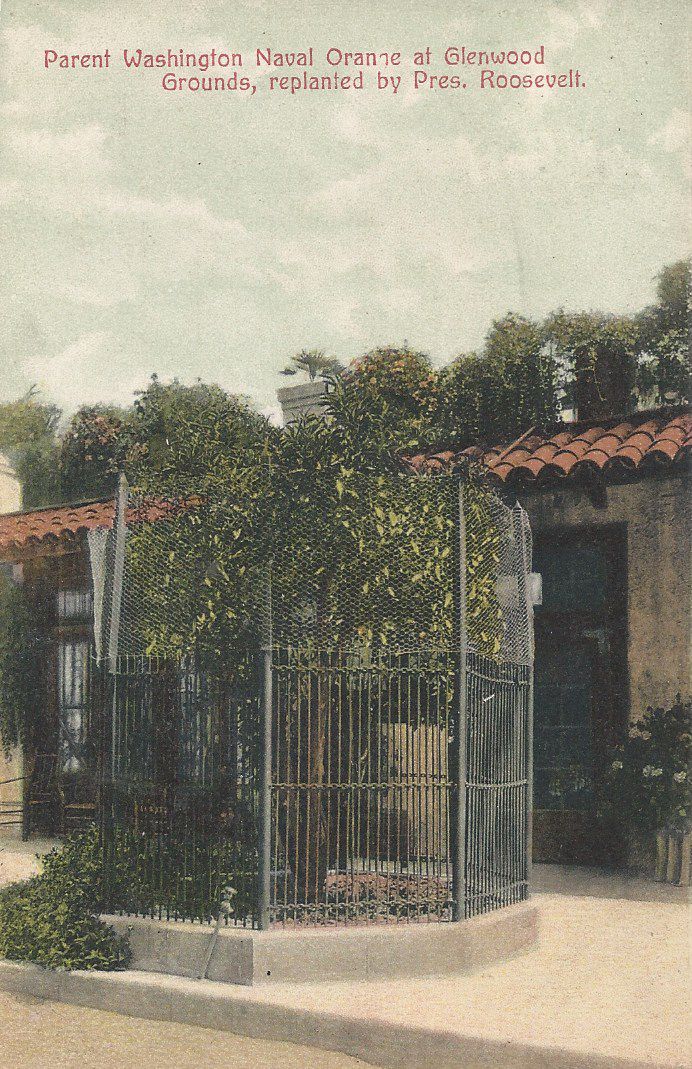
By the summer of 1918, both original Parent Navel Orange Trees, the one at the Mission Inn and the one at the corner of Magnolia and Arlington Avenues, were not doing well, and many feared they were dying. Dr. H. J. Webber and Dr. J. T. Barrett from the Citrus Experimental Station in Riverside were called in. The tree in the small city park at Magnolia and Arlington was saved, but the one at the Mission Inn was not able to be saved. By May of 1922, the paper declared, “The parent navel orange tree in the court of the Glenwood Mission Inn is dead and it will be removed and cut up for relics.”
For many years Riversiders remembered the exciting visit that President Teddy Roosevelt made to our city Whenever they saw the orange tree in front of the Old Adobe or when they traveled Victoria Avenue and looked at the towering palm tree at the intersection near Elsinore Road. Today we can still commemorate Teddy’s visit with a trip to the Roosevelt Palm on Victoria Avenue.
And if you want to learn more about the President’s trip to Riverside, read my book When Teddy Came to Riverside.
Let us email you Riverside's news and events every morning. For free!